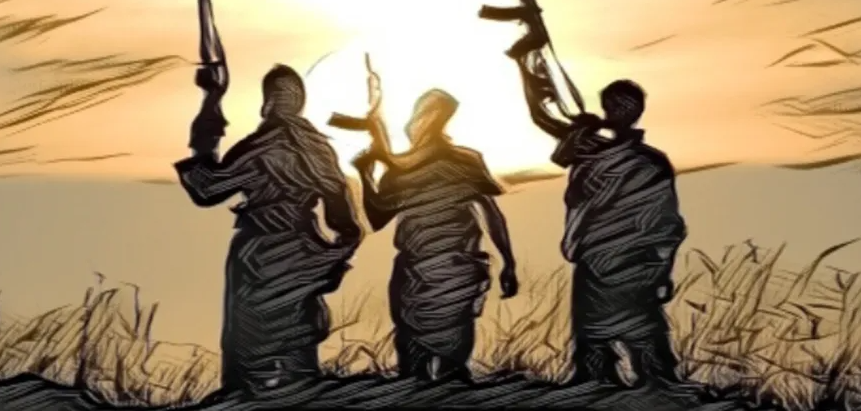Challenge of Naxalism in India (GS Paper 3, Terrorism)

Context
- Recent encounters in Chhattisgarh's Bastar region, where security forces reported the death of at least 28 Maoists, highlight the ongoing and complex struggle against Naxalism in India.
- This situation is emblematic of the larger conflict between government authorities and Left-Wing Extremist (LWE) groups, primarily the Communist Party of India (Maoist).
Understanding Naxalism
- Naxalism is rooted in Maoist ideology and poses a significant threat to India's internal security landscape.
- The movement originated in 1967 with a peasant uprising in Naxalbari, West Bengal, led by influential figures such as Charu Majumdar.
- This uprising aimed to challenge the existing socio-economic structures, advocating for the rights of peasants and marginalized groups.
- Over the years, the movement has evolved and consolidated into the CPI (Maoist), established in 2004 through the merger of two major factions: the Maoist Communist Centre of India and the People’s War Group.
- Today, the CPI (Maoist) is classified as a terrorist organization under the Unlawful Activities (Prevention) Act, reflecting its commitment to armed struggle and its rejection of democratic processes.
Geographical Spread
Naxalism is primarily concentrated in the so-called 'Red Corridor,' which encompasses several Indian states:
- Severely Affected: Chhattisgarh, Jharkhand, Odisha, and Bihar experience intense Naxal activity, characterized by frequent violence and confrontations with security forces.
- Partially Affected: States like West Bengal, Maharashtra, and Andhra Pradesh witness sporadic Naxal operations, often marked by ambushes and recruitment drives.
- Emerging Threats: There are growing concerns about Naxal expansion into southern states such as Kerala and Karnataka, and incursions into northeastern states like Assam and Arunachal Pradesh, which could have significant strategic implications.
Root Causes of Naxalism
- Marginalization and Social Inequality: Naxalism attracts support from marginalized communities, including Dalits and Adivasis, who face socio-economic exclusion. Issues such as land ownership, labor rights, and social justice are central to the movement's ideology.
- Resource Management and Livelihood: For many tribal communities, forests and land are vital for their livelihood. Government policies often restrict access to these resources, leading to discontent and a sense of betrayal. The imposition of laws that disregard the needs of these communities exacerbates tensions.
- Development Deficits: Areas affected by Naxalism frequently lack basic infrastructure, healthcare, education, and sanitation. The absence of development creates a vacuum that extremist ideologies exploit, making the Naxal narrative more appealing to disenfranchised populations.
Implications for National Security
Naxalism poses several critical challenges to India's national security:
- Security Vulnerabilities: The Maoist insurgency reveals internal weaknesses within India’s security apparatus, making the country susceptible to external threats. The CPI (Maoist) has established links with various regional insurgent groups, creating a network that poses a broader security challenge.
- Economic Disruption: Ongoing violence and instability in Naxal-affected regions hinder economic development. The diversion of resources to combat Naxalism limits investments in essential services, creating a cycle of poverty and violence.
- Governance Erosion: The Maoist insurgency undermines governance in affected areas. Their violent tactics—ranging from intimidation to outright killings—disrupt public service delivery, leading to a breakdown of law and order. This vacuum fosters further insurgency as communities lose faith in state institutions.
Government Response
The Indian government has adopted a multifaceted approach to combat Naxalism, focusing on both security and developmental strategies:
- Deployment of Security Forces: The Central Armed Police Forces (CAPFs) play a critical role in counter-insurgency operations, assisting state police forces in high-risk areas. Specialized battalions have been deployed to conduct operations and maintain law and order.
- Financial Support Mechanisms: The Security Related Expenditure (SRE) Scheme allocates funds for the operational needs of security forces, including training, intelligence, and infrastructure development. This support extends to the rehabilitation of surrendered Naxal cadres, promoting reintegration into society.
- Intelligence and Coordination Improvements: Enhanced intelligence-sharing frameworks between central and state agencies have been established to ensure a coordinated response. Multi-Agency Centres (MAC) and State Multi-Agency Centres (SMAC) operate 24/7 to streamline intelligence gathering and operational planning.
- Countering IED Threats: Improvised Explosive Devices (IEDs) are a primary weapon for Maoists. The government has developed Standard Operating Procedures (SOPs) for dealing with explosives and has increased training and resources for security personnel to neutralize these threats effectively.
Looking Ahead
Experts widely agree that addressing Naxalism requires a comprehensive strategy that integrates development with security measures:
- Community Engagement: Actively engaging with local communities and addressing their grievances through inclusive development initiatives is vital. This could involve participatory governance models that give marginalized groups a voice in decision-making.
- Infrastructure Development: Investing in healthcare, education, roads, and sanitation in Naxal-affected areas can significantly improve living conditions. Enhanced access to basic services reduces the appeal of extremist ideologies and fosters a sense of belonging among marginalized populations.
- Peaceful Integration: Establishing channels for dialogue and reconciliation between the state and local communities is essential. This approach could involve amnesty for those who surrender and programs that facilitate social and economic reintegration.
- Long-term Strategic Planning: A sustained commitment to both security and development is crucial for achieving lasting peace. This includes not just immediate responses to violence but also long-term planning that addresses the socio-economic conditions that foster insurgency.
Conclusion
- The government’s recent measures have contributed to a noticeable decline in LWE violence in India.
- However, for the situation to improve sustainably, a balanced approach that prioritizes both security and development is essential.
- By addressing the root causes of Naxalism and fostering an environment of trust and cooperation, India can hope to re-establish stability and peace in the affected regions.


